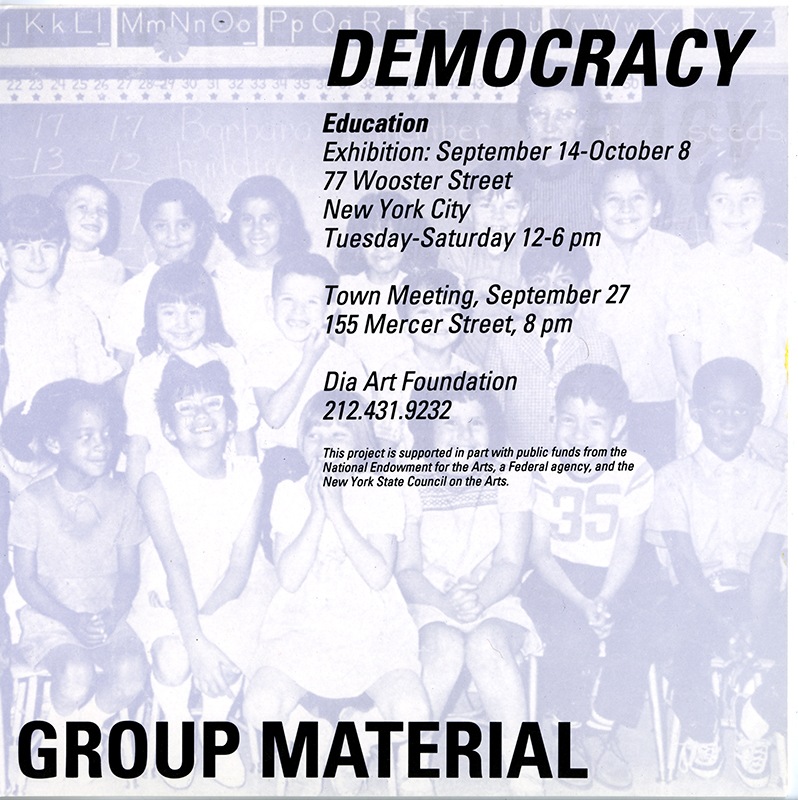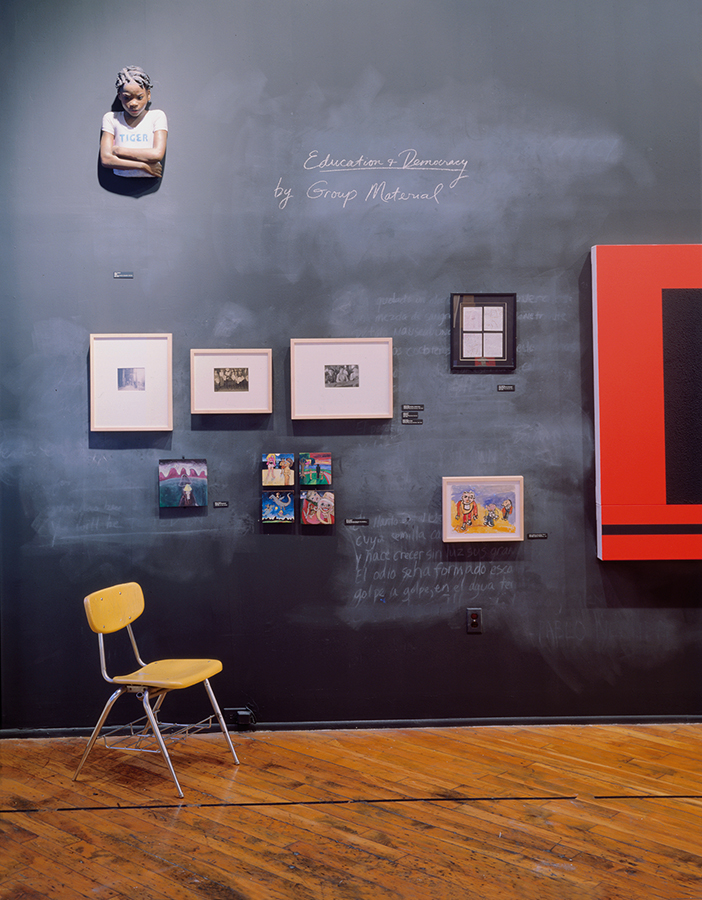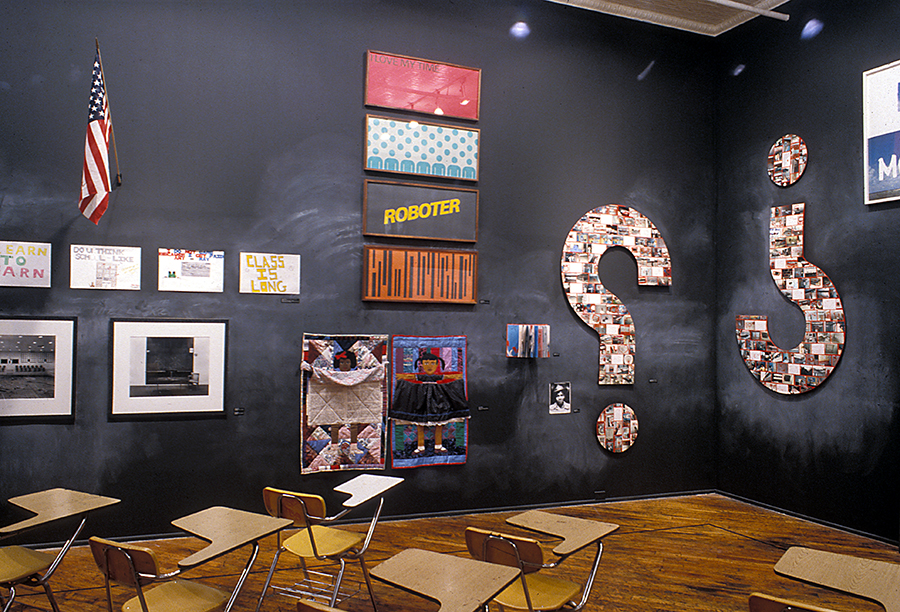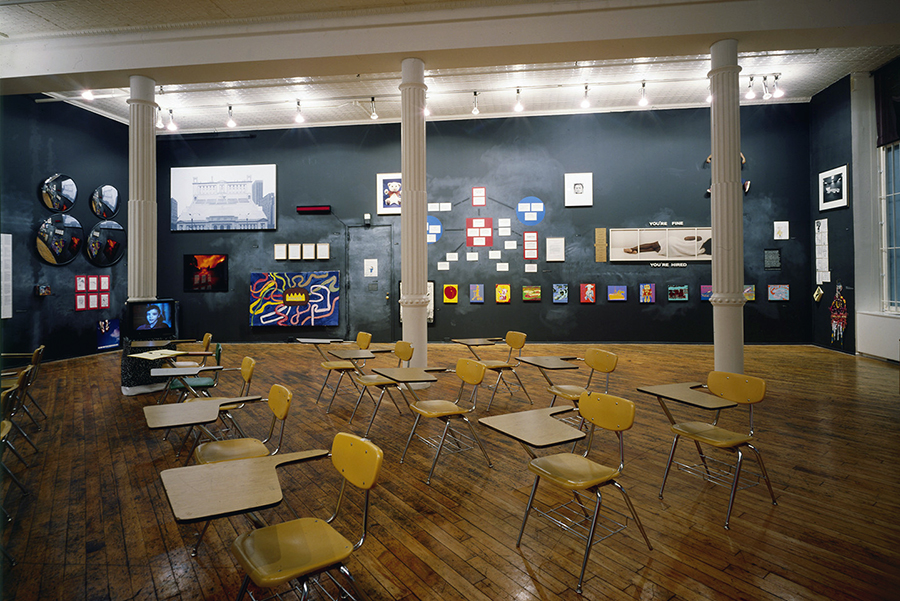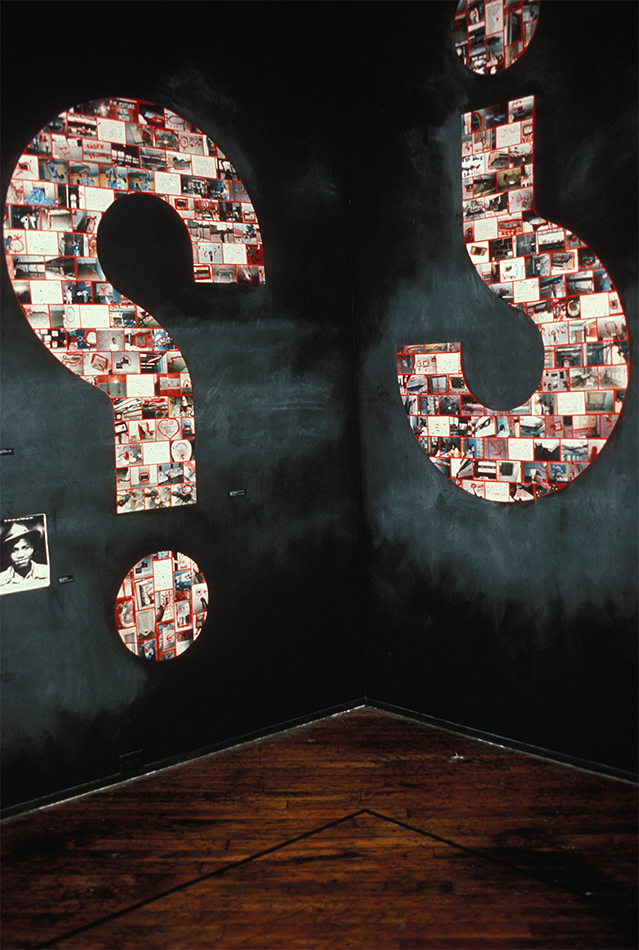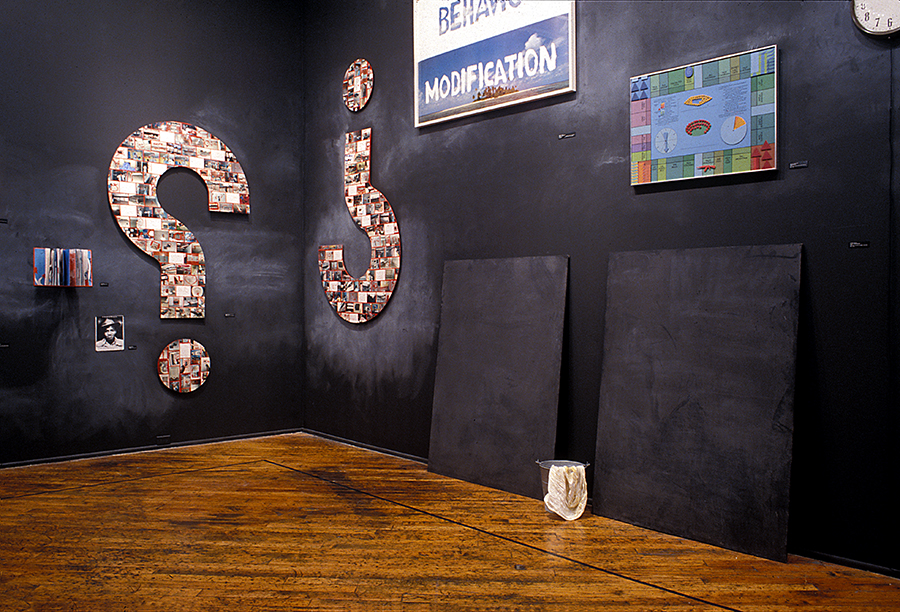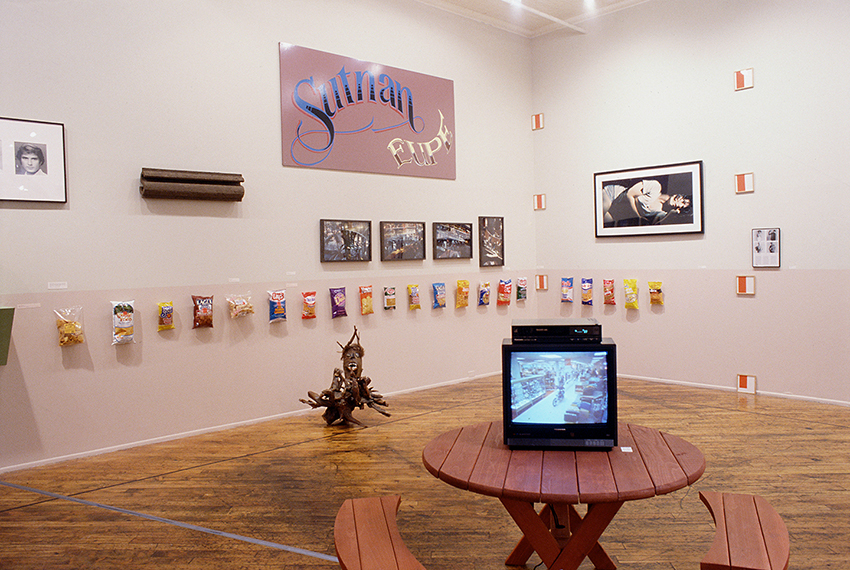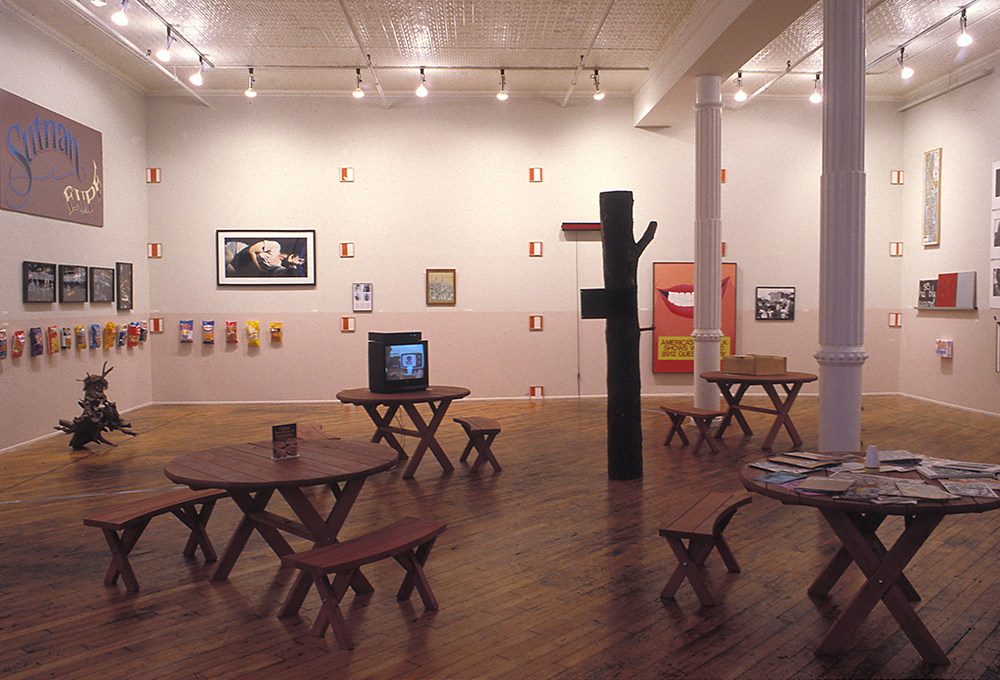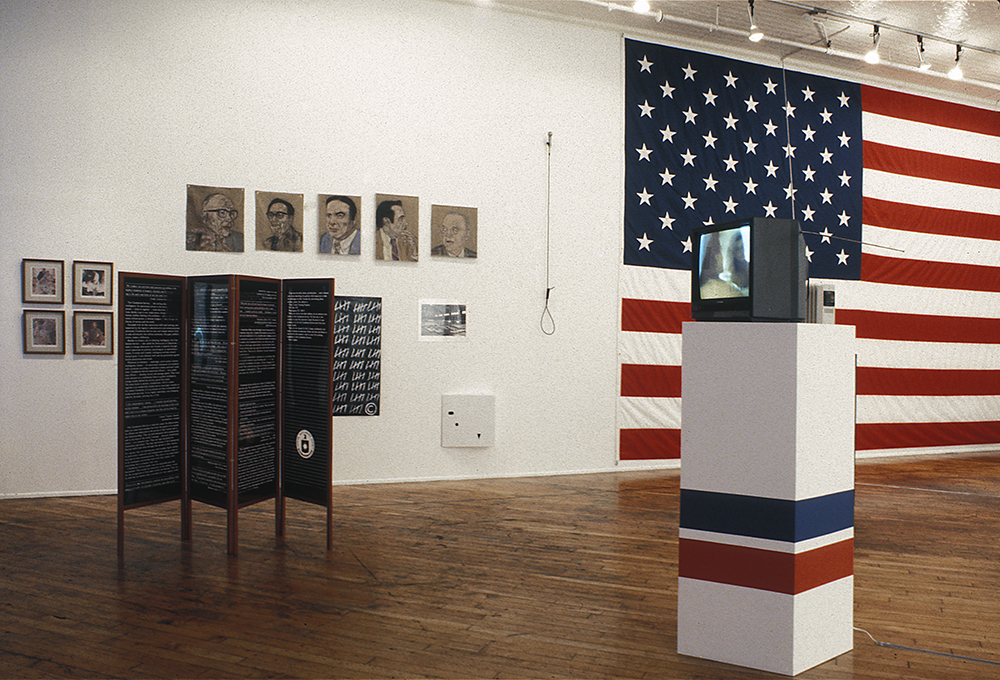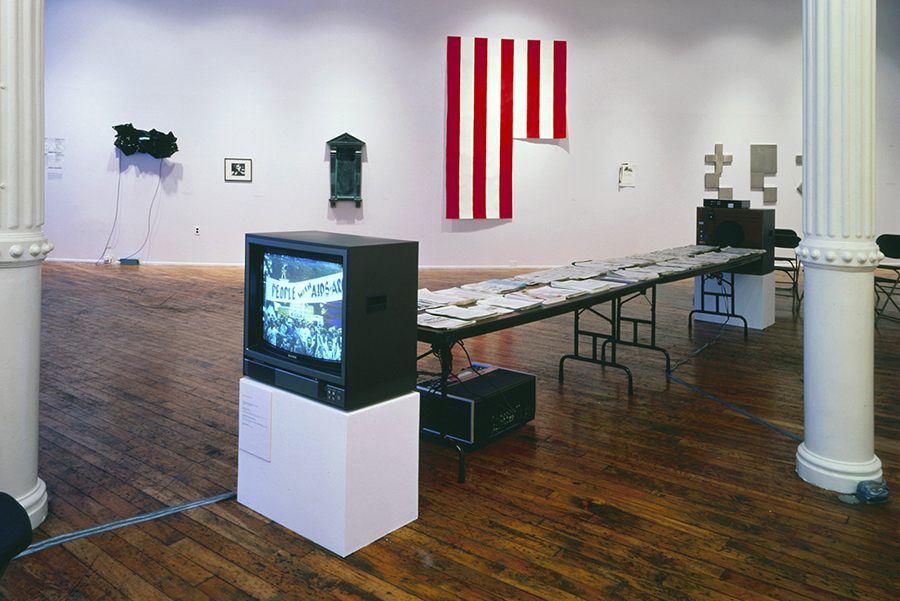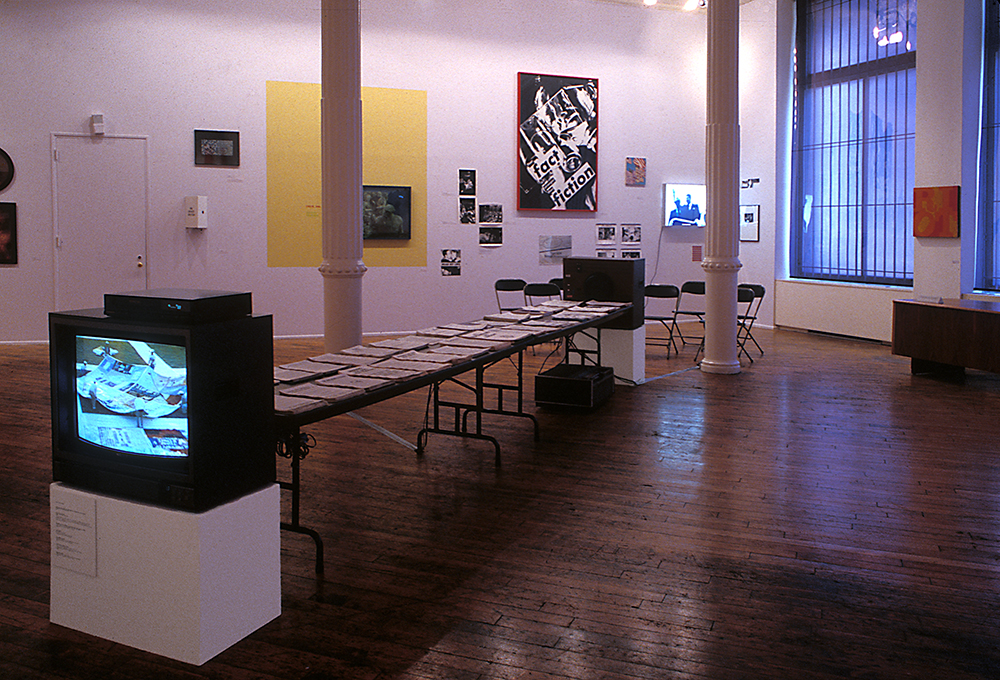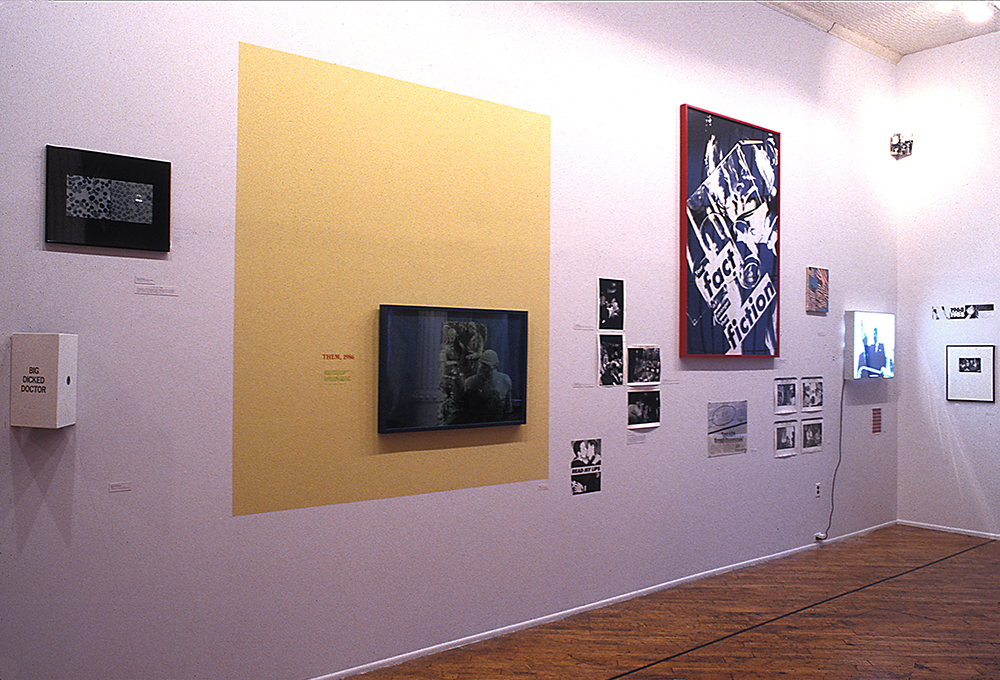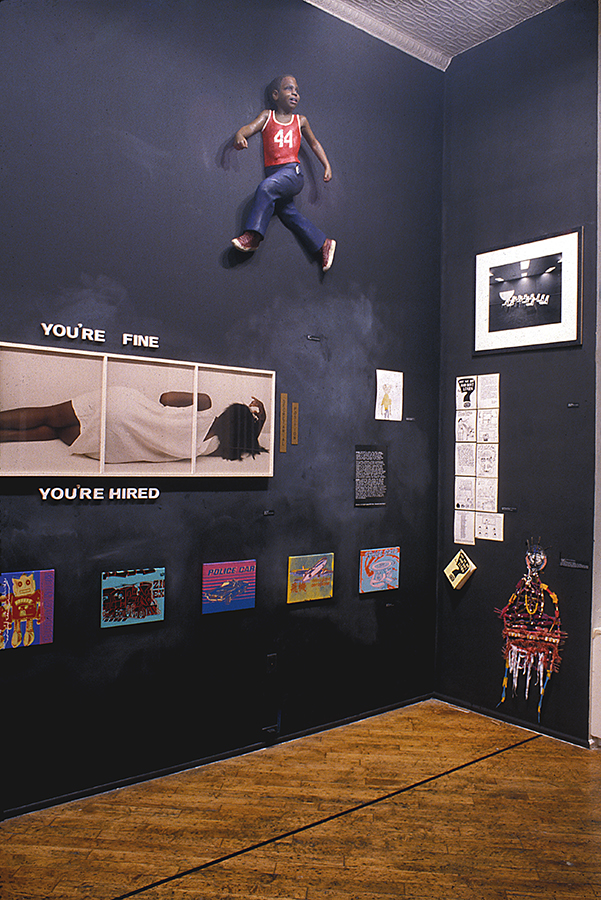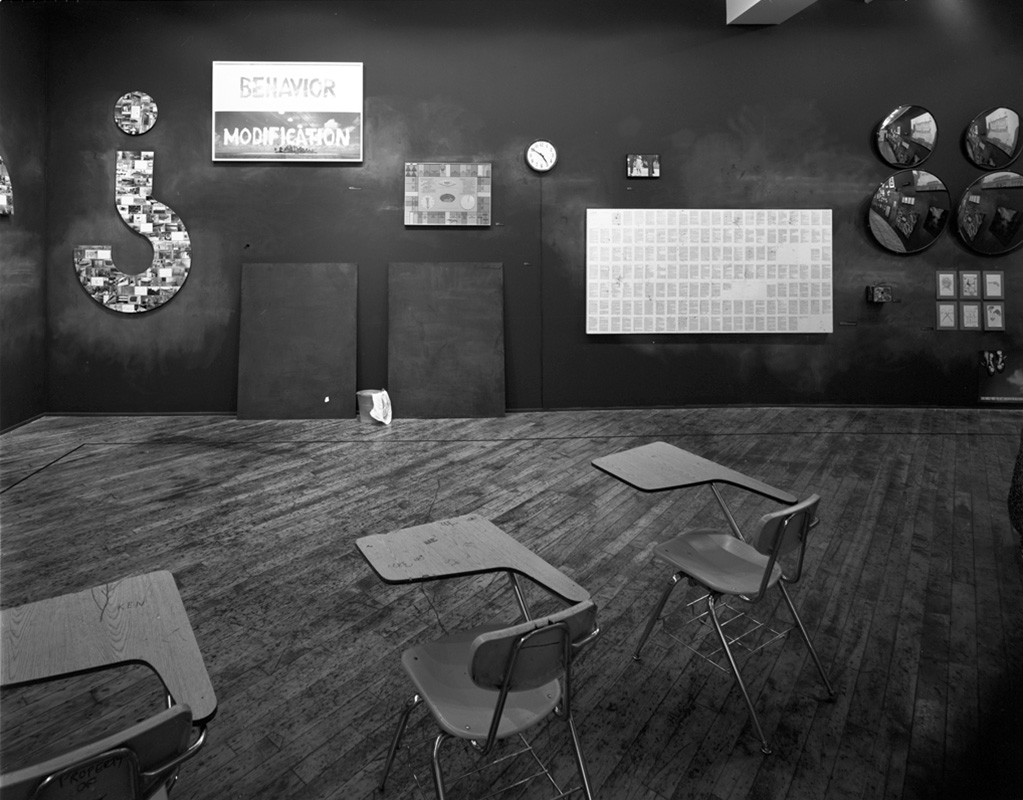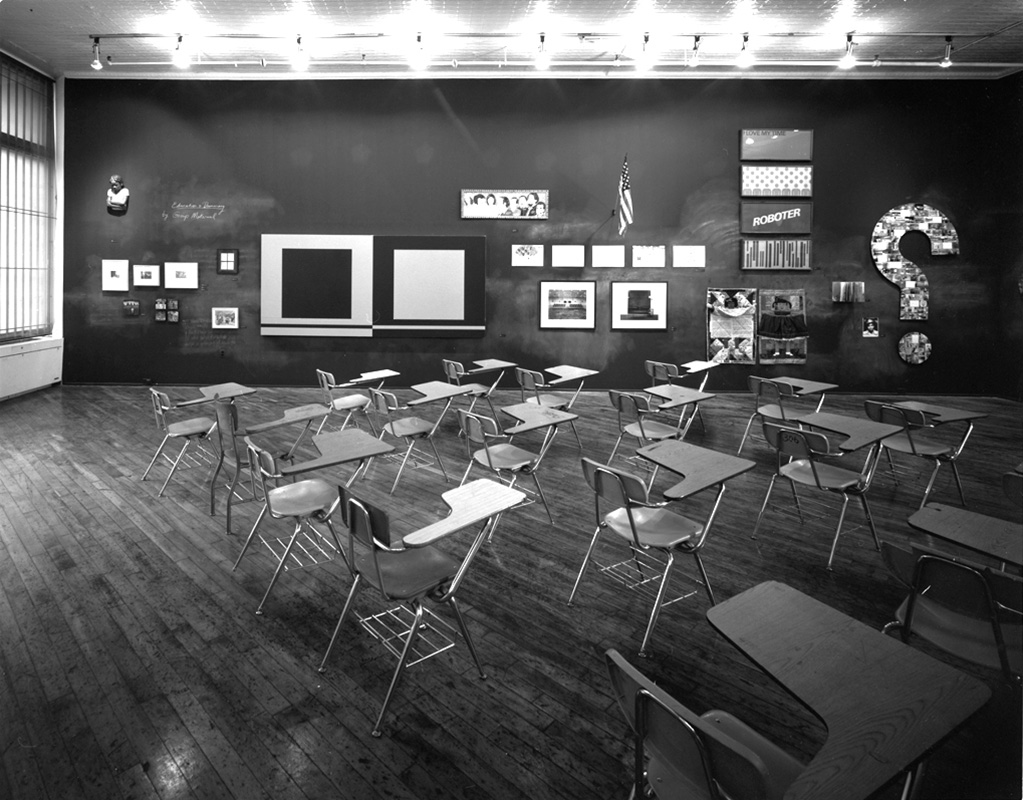Democracy. Four installations, informed by four roundtable discussions, synchronous with four town meetings, book. Dia Art Foundation, New York. 15 September, 1988 – 14 January, 1989.
Exhibition installations: Democracy: Education. 15 September – 8 October, 1988. Democracy: Politics and Election. 15 October – 12 November, 1988. Democracy: Cultural Participation.19 November – 10 December, 1988. Democracy: AIDS and Democracy, a Case Study. 19 December, 1988 – 10 January, 198
On Democracy. (by Group Material)
“Participating in the system doesn’t mean that we must identify with it, stop criticizing it, or stop improving the little piece of turf on which we operate.”
Judge Bruce Wright, Justice, New York State Supreme Court
Ideally, democracy is a system in which political power rests with the people: All citizens actively participate in the process of self-representation and self-governing, an ongoing discussion in which a multitude of diverse voices converge. But in 1987, after almost two terms of the Reagan presidency and with another election year at hand, it was clear that the state of American democracy was in no way ideal. Access to political power was obstructed in complex ways; participating in politics had degenerated into passive and symbolic involvement; and the current of “official” politics precluded a diversity of viewpoints. When the Dia Art Foundation approached us with the idea of doing a project, it was immediately apparent to us that democracy should serve as the theme.
The subject of democracy not only became our content, but it influenced our method of working. This theme promoted a greater awareness of our own process. One of the first questions we asked was: “Why are they asking us?” To us, the Dia Art Foundation signified “exclusive,” “white,” “esoteric,” and “male,” whereas we had always attempted to redefine culture around an opposing set of terms: “inclusive,” “multicultural,” “nonsexist,” and “socially relevant. In general, we see ourselves as the outspoken distant relative at the annual reunion, who can be counted on to bring up the subject no one wants to talk about.
The subject no one in the art world wants to talk about is usually politics. Yet, because every social or cultural relationship is a political one, we regard an understanding of the link between politics and culture as essential. “Politics” cannot be restricted to those arenas stipulated as such by professional politicians. Indeed, it is fundamental to our methodology to question every aspect of our cultural situation from a political point of view””to ask, “What politics inform accepted understandings of art and culture? Whose interests are served by such cultural conventions? How is culture made, and for whom is it made?”
In conceptualizing this project, therefore, we proposed a structure that differed from the conventional art exhibitions, lectures, and panels Dia had previously sponsored. We identified four significant areas of the crisis in democracy: education, electoral politics, cultural participation, and AIDS. For each topic, we collaboratively organized a roundtable discussion, an exhibition, and a town meeting. For each roundtable, we invited speakers from diverse professions and perspectives to participate in an informal conversation. These discussions helped us to prepare the installations and provided important information for planning the agendas for the town meetings.
From: Wallis, Brian, ed. Democracy | A Project by Group Material, Bay Press, Seattle. 1990
Deitcher, David, “Social Aesthetics”_(link)

